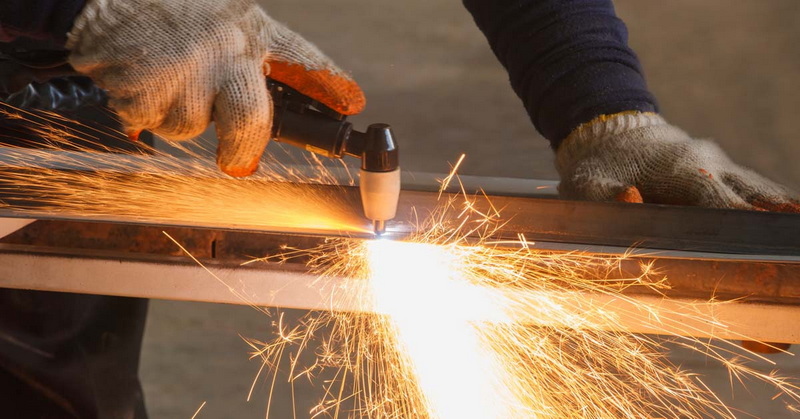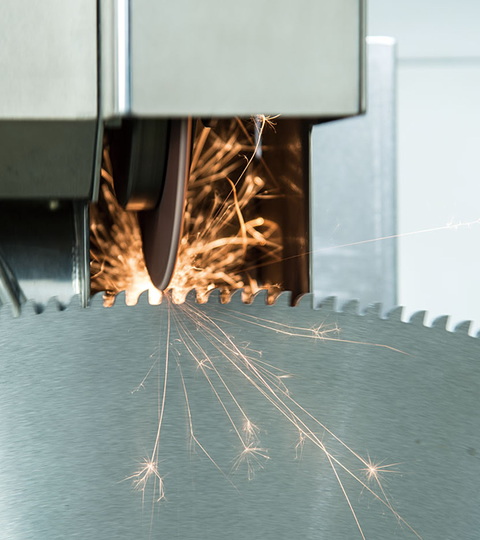Content Menu
● Introduction to Tungsten Carbide
>> Tungsten Carbide Structure
● Properties of Tungsten Carbide
>> Physical Properties
>> Chemical Properties
● Applications of Tungsten Carbide
>> Detailed Applications
>>> Cutting Tools
>>> Jewelry
>>> Industrial Machinery
>>> Armor-Piercing Ammunition
>>> Oil and Gas Industry
● Does Tungsten Carbide Spark?
>> Spark Generation Mechanism
>> Practical Observations
>>> Safety Considerations
● Manufacturing Process of Tungsten Carbide
>> Environmental Considerations in Manufacturing
● Comparison with Other Hard Materials
>> Hardness Comparison
>> Cost Considerations
>> Application Suitability
● Conclusion
● FAQ
>> 1. What is tungsten carbide made of?
>> 2. Is tungsten carbide more durable than steel?
>> 3. Can tungsten carbide be used for jewelry?
>> 4. Does tungsten carbide rust?
>> 5. How does tungsten carbide compare to diamond?
● Citations:
Introduction to Tungsten Carbide
Tungsten carbide (WC) is a remarkable chemical compound formed from equal parts of tungsten and carbon atoms. This material is renowned for its exceptional hardness, wear resistance, and thermal stability, making it a preferred choice in various industrial applications, including cutting tools, abrasives, and jewelry. The unique properties of tungsten carbide arise from its robust crystalline structure, which can withstand extreme conditions.

Tungsten Carbide Structure
The structure of tungsten carbide is characterized by a face-centered cubic (FCC) lattice arrangement. This arrangement contributes to its hardness and strength. The carbon atoms occupy the octahedral interstitial sites in the tungsten lattice, forming a stable compound that exhibits remarkable mechanical properties.
Properties of Tungsten Carbide
Physical Properties
Tungsten carbide exhibits several key physical properties:
- Hardness: It ranks between 9.0 and 9.5 on the Mohs scale, making it one of the hardest materials available.
- Density: Approximately twice as dense as steel, contributing to its stability in high-impact environments.
- Melting Point: With a melting point of about 2,870°C (5,200°F), tungsten carbide maintains its integrity under extreme heat.
- Thermal Conductivity: It has a thermal conductivity of approximately 110 W/m·K, facilitating efficient heat dissipation during operations.
Chemical Properties
Tungsten carbide is chemically stable and resistant to oxidation at temperatures below 500-600°C. It reacts with certain gases like fluorine and chlorine but remains unreactive to dry hydrogen up to its melting point. The compound's resistance to acids is notable; it withstands most acids except mixtures of hydrofluoric and nitric acids at elevated temperatures.
Applications of Tungsten Carbide
Tungsten carbide's unique properties make it suitable for various applications:
1. Cutting Tools: Its hardness allows for high-speed cutting operations in machining processes.
2. Jewelry: Due to its scratch-resistant nature and aesthetic appeal, tungsten carbide is popular in wedding bands and other jewelry.
3. Industrial Machinery: Used in components that require high wear resistance, such as drill bits and mining tools.
4. Armor-Piercing Ammunition: Its density and hardness make it effective in military applications.
5. Oil and Gas Industry: Tungsten carbide is used for drilling equipment due to its ability to withstand harsh environments.
Detailed Applications
Cutting Tools
In the manufacturing sector, tungsten carbide cutting tools are essential for precision machining. They are used in lathes, milling machines, and other equipment where durability and precision are paramount. The ability to maintain sharp edges even after prolonged use makes tungsten carbide tools highly sought after.
Jewelry
Tungsten carbide jewelry has gained popularity due to its contemporary look and durability. Unlike traditional metals that can scratch easily, tungsten carbide rings remain polished and new-looking for years. They are available in various finishes, including brushed, polished, and matte.
Industrial Machinery
In industries such as mining and construction, tungsten carbide components are critical for machinery that operates under extreme conditions. For instance, drill bits made from tungsten carbide can penetrate hard rock more efficiently than those made from other materials.
Armor-Piercing Ammunition
In military applications, tungsten carbide is used in armor-piercing rounds due to its density and hardness. These projectiles can penetrate armored vehicles more effectively than conventional ammunition.
Oil and Gas Industry
The oil and gas industry utilizes tungsten carbide for drilling equipment that must endure high pressures and abrasive materials found underground. The material's resistance to wear significantly extends the life of drilling tools.

Does Tungsten Carbide Spark?
A common question regarding tungsten carbide is whether it can produce sparks when struck against metal or other hard surfaces. The answer lies in understanding the material's properties:
Spark Generation Mechanism
When two hard materials collide, they can create sparks due to the following factors:
- High Hardness: Tungsten carbide's extreme hardness means that when it strikes another hard surface, it can generate enough friction to produce sparks.
- Temperature: The impact generates heat; if the temperature exceeds the ignition point of any particles released during the collision, sparks will be produced.
Practical Observations
In practical scenarios, tungsten carbide does produce sparks when struck against metals like steel or iron. However, the intensity and frequency of sparking depend on several factors:
- The angle of impact
- The speed of the strike
- The surface conditions of both materials
Safety Considerations
While the sparking phenomenon can be fascinating from a scientific standpoint, it's important to consider safety implications in environments where flammable materials are present. Proper precautions should be taken when using tungsten carbide tools near combustible substances.
Manufacturing Process of Tungsten Carbide
The production of tungsten carbide involves several key steps:
1. Synthesis: Tungsten metal powder is reacted with carbon at high temperatures (1,400–2,000°C) to form tungsten carbide powder.
2. Mixing with Binders: The tungsten carbide powder is often mixed with metallic binders like cobalt or nickel to enhance toughness.
3. Sintering: The mixture is pressed into shapes and heated to allow the binder to melt and bind the tungsten carbide particles together.
4. Finishing Processes: After sintering, the products may undergo grinding or polishing processes to achieve desired dimensions and surface finishes.
Environmental Considerations in Manufacturing
The manufacturing process of tungsten carbide raises environmental concerns due to the mining activities required for obtaining raw materials like tungsten ore. Sustainable practices are increasingly being adopted within the industry to minimize environmental impacts through recycling processes and responsible sourcing.
Comparison with Other Hard Materials
While tungsten carbide is renowned for its hardness, it's essential to compare it with other hard materials such as diamond or ceramic composites:
Hardness Comparison
- Diamond: Diamond remains the hardest known natural material; however, it is brittle compared to tungsten carbide.
- Ceramics: Advanced ceramic materials also exhibit high hardness but lack toughness under impact compared to tungsten carbide.
Cost Considerations
Tungsten carbide offers a balance between performance and cost-effectiveness compared to diamond tools which can be prohibitively expensive for many applications.
Application Suitability
Each material has specific applications where it excels:
- Diamond tools are ideal for precision cutting in softer materials.
- Tungsten carbide is preferred for heavy-duty applications requiring durability under stress.
Conclusion
Tungsten carbide stands out as a material with exceptional hardness and durability, making it indispensable in various industrial applications. Its ability to generate sparks upon impact raises questions about its use in specific environments where ignition could pose risks. Understanding these properties helps industries leverage tungsten carbide effectively while ensuring safety measures are in place.

FAQ
1. What is tungsten carbide made of?
Tungsten carbide is a chemical compound composed of equal parts of tungsten and carbon atoms.
2. Is tungsten carbide more durable than steel?
Yes, tungsten carbide is approximately three times stiffer than steel and significantly more resistant to wear.
3. Can tungsten carbide be used for jewelry?
Absolutely! Tungsten carbide is popular in jewelry due to its scratch resistance and aesthetic appeal.
4. Does tungsten carbide rust?
No, tungsten carbide does not rust due to its chemical stability; however, it can be affected by certain acids.
5. How does tungsten carbide compare to diamond?
While both materials are extremely hard, diamond is harder than tungsten carbide; however, tungsten carbide is more durable under impact conditions.
Citations:
[1] https://en.wikipedia.org/wiki/Tungsten_carbide
[2] https://www.linde-amt.com/resource-library/articles/tungsten-carbide
[3] https://www.mdpi.com/1996-1944/16/15/5385
[4] https://www.vedantu.com/chemistry/tungsten-carbide
[5] http://ieeexplore.ieee.org/document/1507757/
[6] http://www.tungsten-carbide.com.cn
[7] https://www.researchgate.net/publication/4174475_Mechanical_properties_of_binderless_tungsten_carbide_by_spark_plasma_sintering
[8] http://www.chinatungsten.com/Tungsten-Carbide/Properties-of-Tungsten-Carbide.html
















